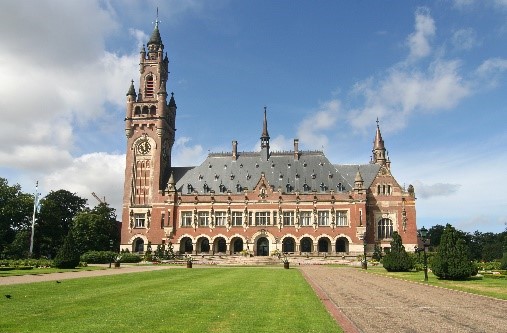
On 23 January 2020, the International Court of Justice (the “Court”) unanimously decided to indicate provisional measures in the case Application of the Convention on the Prevention and Punishment of the Crime of Genocide (The Gambia v. Myanmar).
On 11 November 2019, the Republic of The Gambia (“The Gambia”) filed an application instituting proceedings against the Republic of the Union of Myanmar (“Myanmar”) concerning alleged violations of the Convention on the Prevention and Punishment of the Crime of Genocide (“Genocide Convention”). The Gambia requested the Court to grant provisional measures to preserve the rights of the Rohingya group and its members in Myanmar, as well as those of The Gambia.
In its recent decision, the Court found, first, that it had prima facie jurisdiction under Article IX of the Genocide Convention because a dispute relating to the Convention existed between the parties. In particular, the Court relied on reports by the Independent International Fact-Finding Mission on Myanmar established by the UN Human Rights Council (“Fact-Finding Mission”) as well as statements made by the parties, including those before the UN General Assembly.
Second, the Court found that The Gambia had prima facie standing to bring its case. Here, the Court rejected Myanmar’s argument that The Gambia was acting as a proxy for the Organisation of Islamic States, concluding, instead, that any State party to the Genocide Convention may invoke the responsibility of another State party, with a view to ascertaining the alleged failure to comply with its obligations erga omnes partes.
Third, the Court found that the rights in respect of which The Gambia claimed protection were plausible and some of them were linked to the provisional measures requested. The Court observed that the Genocide Convention was intended to protect members of a national, ethnical, racial or religious group from acts of genocide, as well as conspiracy, direct and public incitement, attempts, and complicity to commit genocide. In addition, the Court found that the Rohingya in Myanmar appeared to constitute a protected group within the Genocide Convention.
Fourth, the Court found that there was “a real and imminent risk of irreparable prejudice” to the rights invoked by The Gambia. In particular, the Court cited Fact-Finding Mission reports indicating that the Rohingya had been subjected to acts capable of affecting their right of existence as a protected group and, further, that the Rohinga people remained at serious risk of genocide.
Fifth, the Court indicated that Myanmar must “take all measures within its power” to prevent acts covered by the Genocide Convention, which includes killing members of the group; causing serious bodily or mental harm to the members of the group; deliberately inflicting on the group conditions of life calculated to bring about the group’s physical destruction in whole or in part; and imposing measures intended to prevent births within the group. The Court also indicated that Myanmar’s military (as well as any irregular armed units directed or supported by Myanmar and any organizations and persons subject to Myanmar’s control, direction or influence) should not commit any of the aforementioned acts. The Court further indicated that Myanmar should “take effective measures to prevent the destruction and ensure the preservation of evidence” in relation to these acts. Finally, the Court indicated that, within four months, Myanmar must provide the Court with a report on all measures taken pursuant to its ruling (and thereafter every six months, pending a final decision on the case).
Vice-President Xue and Judge Cançado Trindade appended separate opinions, and Judge ad hoc Kress (appointed by Myanmar) filed a declaration.
The Court’s ruling is here
Vice-President Xue’s separate opinion is here
Judge Cançado Trindade’s separate opinion is here
Judge ad hoc Kress’s declaration is here
